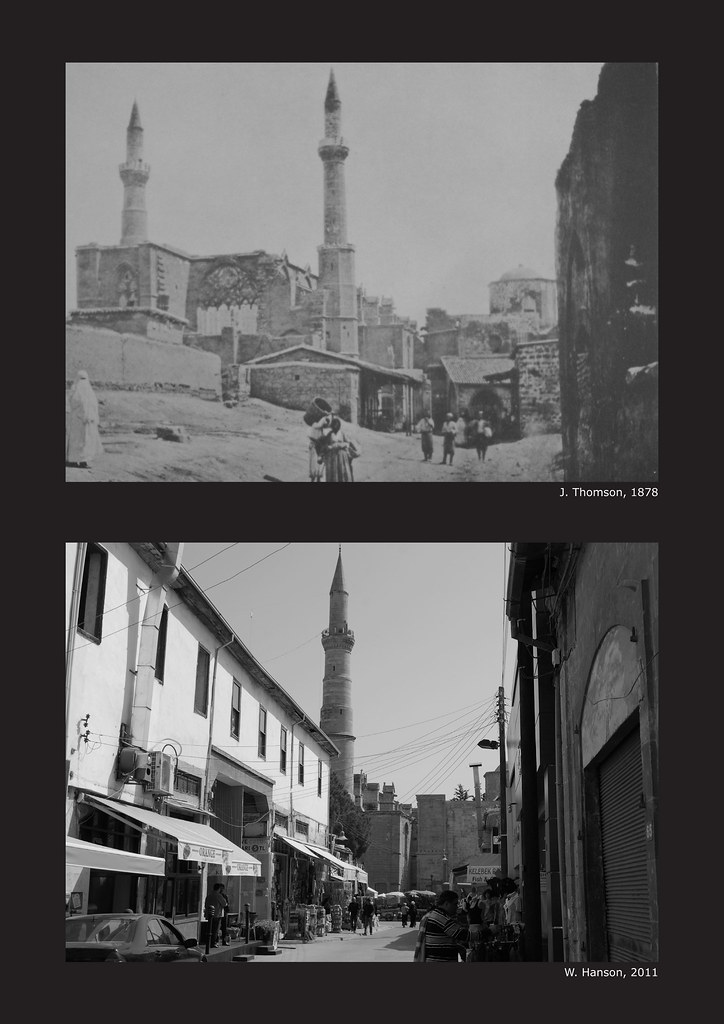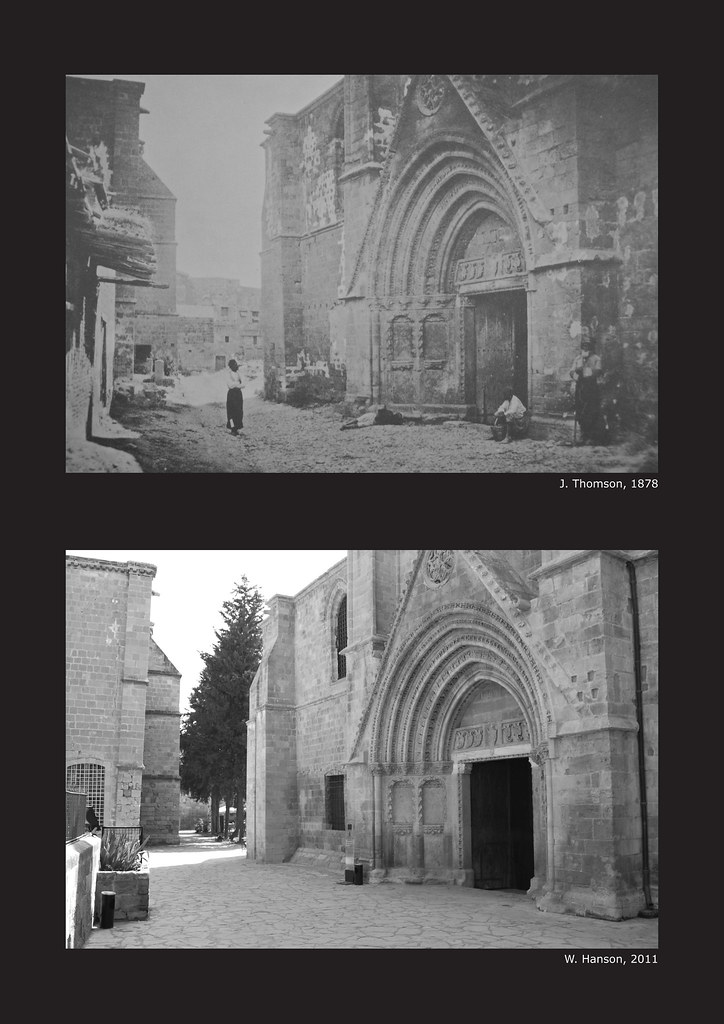John Thomson arrived the year the British arrived on the island (1878) with a camera. He published his photographic journal of his travels in a book called Through Cyprus with the Camera in the Autumn of 1878. I have taken comparison photographs to a few that he included in his book along with the description he provides for each during his visit:
St. Sophia, Nicosia
"The Cathedral of St. Sophia, now used as a mosque, is a noble edifice, which carries one back to the period of the Lusignan princes, whose mutilated monuments may be seen within its walls. The lofty, pillared interior is approached through three arched portals, richly sculptured and pointed. These portals have escaped the rough usage which has wrecked other parts of the building, and (as may be gathered from the photograph) the finely-sculptured windows have also been preserved. But as for the splendid interior, it has lost its rich decorations; and its carved work and pillars are now daubed with gaudy-coloured paint, or with a whitewash which possibly typifies the purity of the faith of the Prophet.
It is fortunate that Moslem economy, or, perhaps, a lack of fanatical zeal, has preserved to use so much of this fine specimen of early Gothic architecture. The tower, which once crowned the edifice has given place to galleried minarets; the old sonorous summons of the cathedral bell has been exchanged for muezzins, which each morning and evening call the faithful to prayer." (Thomson, 14)
St. Nicholas, Nicosia
"Hard by the Cathedral of St. Sophia stands a church once dedicated to St. Nicholas but now used as a granary, whose richly sculpted portal, the subject of this photograph, is one of the finest examples of its kind to be found in Cyprus. Nicosia, when at the height of its prosperity in the fourteenth century, boasted no less than two hundred and fifty chapels and churches; but the work of demolition has since been so successfully pursued, that only two of three edifices now remain to testify to the wealth once lavished on their building and decoration.
In strolling through the town, one may readily perceive that the churches, very shortly after the Turkish conquest, were used as quarries, and long continued to supply building materials to generations of Cypriotes. When these resources became at last exhausted, as no labour was forthcoming to procure stone in the hills, the islanders fell back upon the old sun-dried brick which figures so largely in the ramshackle architecture of the capital. What could be more striking than the contrast of the two such styles as have been presented face to face in this picture? The one Gothic, the other Turk mud-ine if we may so denominate it! In the latter case, however, nature was made the most of the projecting rafters, and the roof is garnished with curious herbage. Beyond, in the distance, is a mound of debris. Many such mounds are to be met with during an hour’s march through the streets and lanes of Nicosia, and the nature of their contents, when some inquiring spirit shall one day open them, will throw light, if not on the early history of the capital, at any rate on the sanitary condition of the locality." (Thomson, 15)
Thomson, J. 1985 (1878). Through Cyprus with the Camera in the Autumn of 1878: Volumes 1 and 2. Trigraph Ltd.


No comments:
Post a Comment